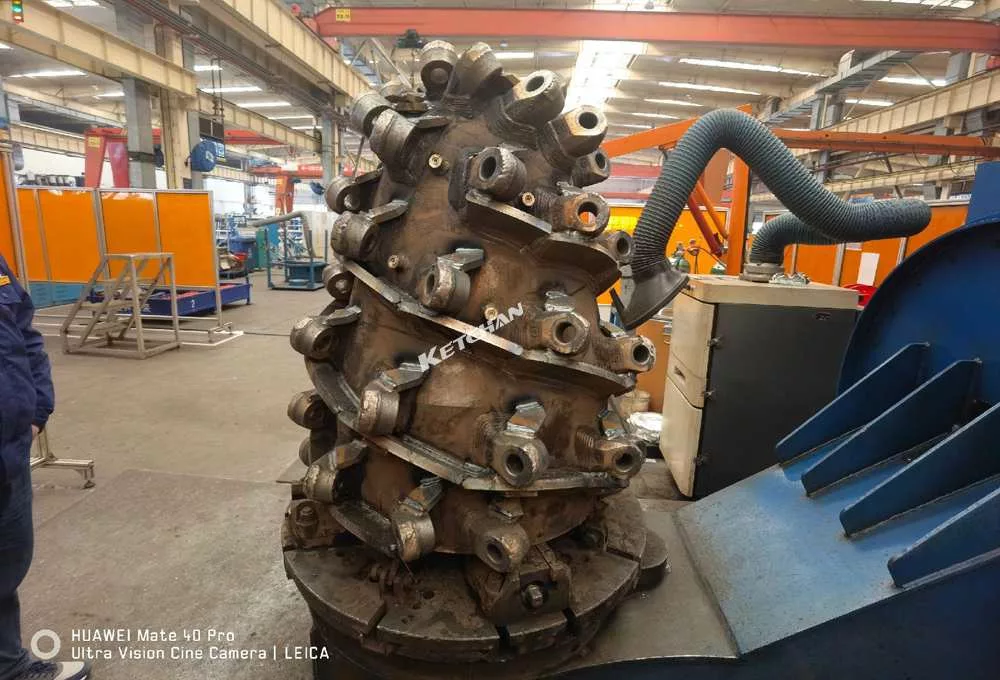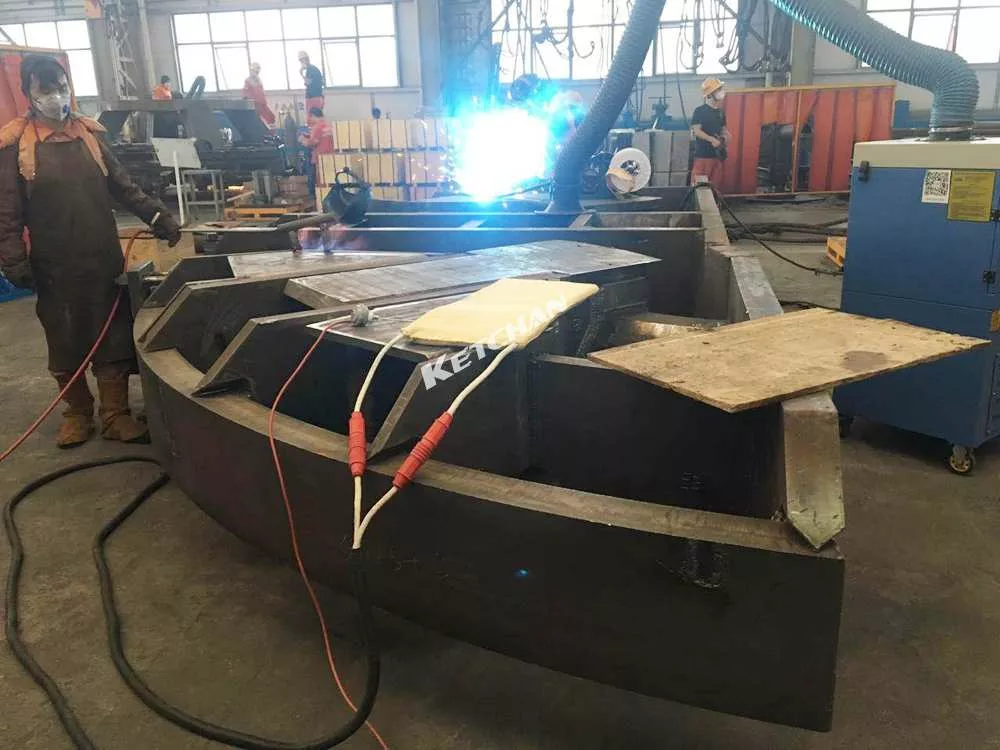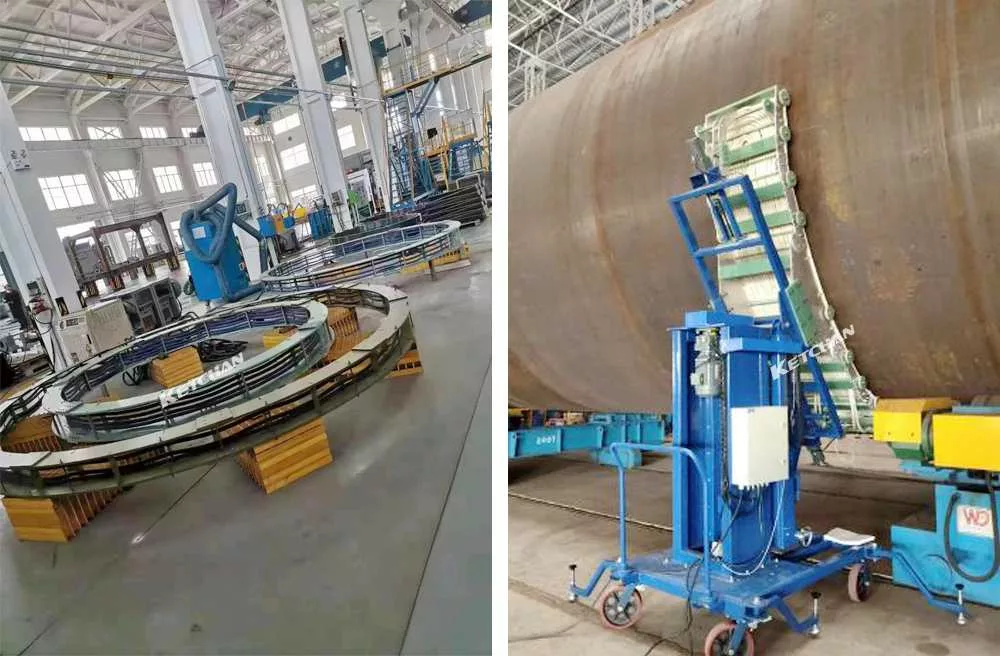

Pre-weld and post-weld heat treatment are important processes for welding high-strength or high-hardened steels, such as those used in tunnel rock mining boring head drill bits. These processes help to prevent cracking, improve toughness, and relieve residual stresses in the weld and the heat-affected zone (HAZ).
Pre-weld heat treatment involves heating the weld and the adjacent base metal to a minimum temperature before welding, and maintaining that temperature until the welding is completed. This reduces the cooling rate of the weld and the HAZ and minimizes the formation of brittle quenched martensite. The preheat temperature depends on the type and thickness of the steel, the welding process, and the filler metal. For example, according to this source, Bisalloy 80 requires a preheat of 550°C, while wear steel G500 requires a preheat of 370°C.
Post-weld heat treatment is a controlled heat treatment method that reheats the welded components to a lower temperature than their critical transformation temperature (known as AC1). This is done after the welding is finished and usually involves holding the temperature for a certain time, and then cooling slowly. This process changes the quenched martensite to tempered martensite, which is a tougher and more desirable structure. It also lowers the hardness to the required level, and relieves the quenching stresses. The post-weld heat treatment temperature and time depend on the desired properties and specifications of the welded components. For example, according to this source, post-weld heat treatment for low alloy steels can range from 550°C to 700°C, and from 30 minutes to 2 hours.
The advantages of using an air-cooled electromagnetic induction heating machine for pre-weld and post-weld heat treatment:

- It is faster and more efficient than other methods, such as resistance or open flame heating. It can reach the target temperature in minutes, rather than hours, and maintain a consistent heat throughout the entire part.
- It is safer and more environmentally friendly than other methods, as it does not produce any flames, fumes, or noise. It also reduces the risk of burns, fires, or explosions.
- It is easier and more flexible to use than other methods, as it does not require any coolers, coolant, or ceramic pads. It can fit almost any induction preheating application with air-cooled cables or blankets that can be laid or wrapped onto or around the part.
- It is more reliable and cost-effective than other methods, as it has lower operating costs and consumable costs. It also has a longer service life and less maintenance requirements.

